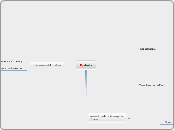Dyslexia
Aquired Dyslexia (damage, i.e. Stroke)
=Well researched
Written Language Problems
3 Types
Surface
85% Regular Verbs
no Problem
Nonsense words
25% Irregualar Verbs
wrong read bowl: howl
Phonological
Familar Words
CAN READ
Unfamilar
CANNOT READ
Deep
Lion as tiger
symphony as orchestra
Only access to meaning
Cothearts Dual Route Model
Shows: Surface Dyslecs: damaged lexical
Regular Words can run both ways
Speed advantage only for low-frequency words
Orthographica AnalysisDECides RECOGN. as
Regular: Assembled: Regular Route
Grapheme (Input) to phoneme (Output) rule system
Irregualar: Assigned: "irregular "Lexical route
Orhtografic Input Lexicon: Recognition
SPEECH
Orthografic Output lexicon: Pronounciation
SPEECH
Semanitcs
Damage
Result: Automatic: Grapheme -to- Phoneme used
Developemental Dyslexia
Brain not developed normally
=not so well researched
